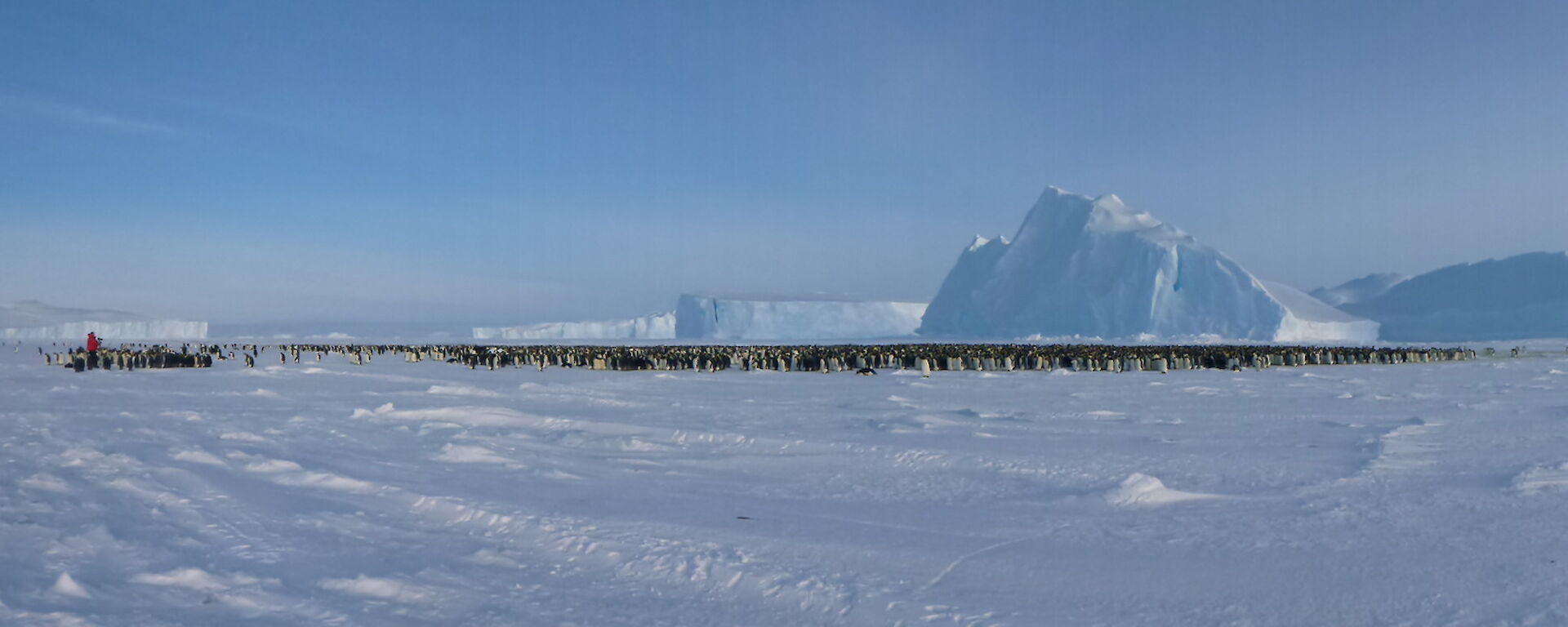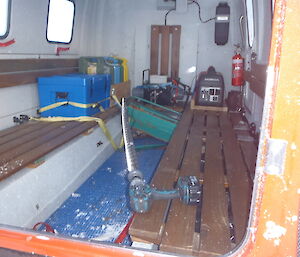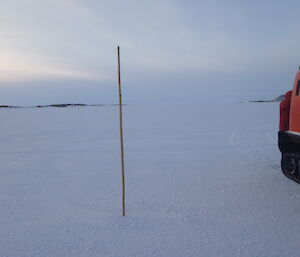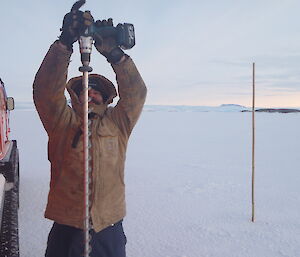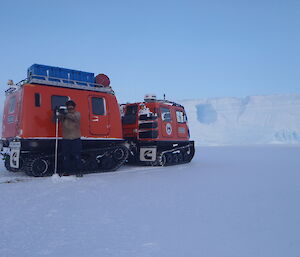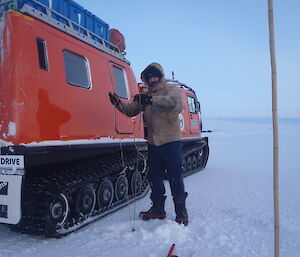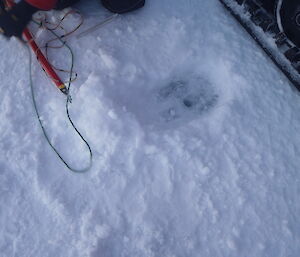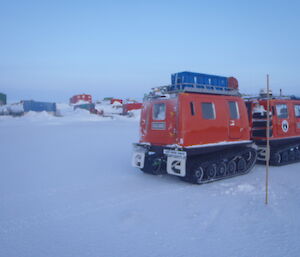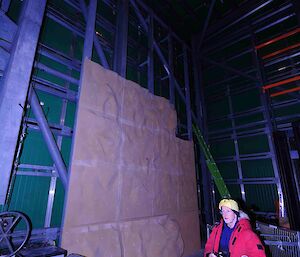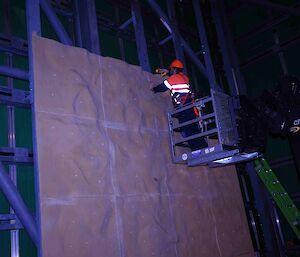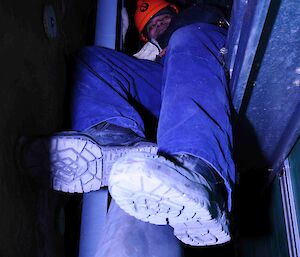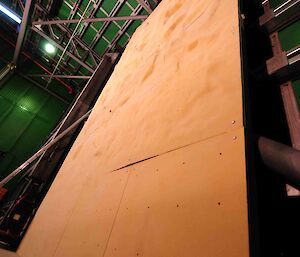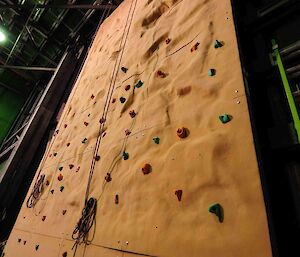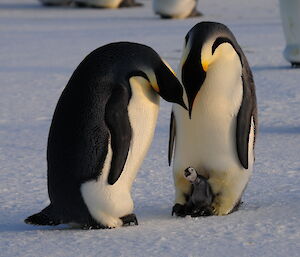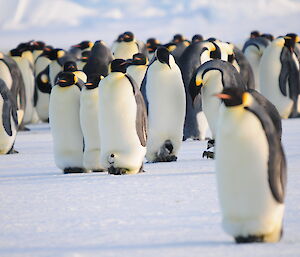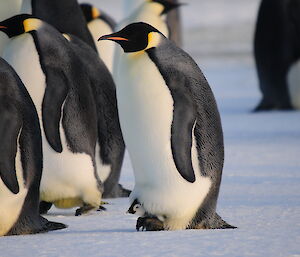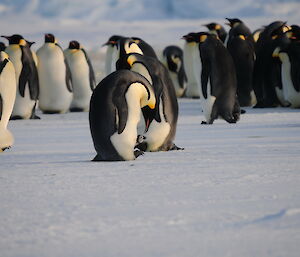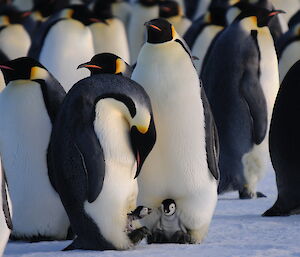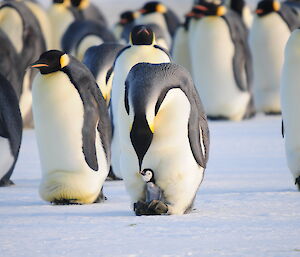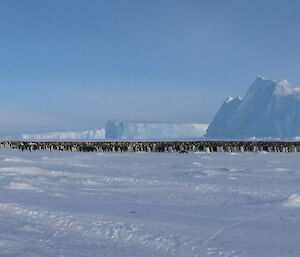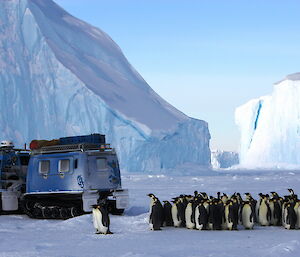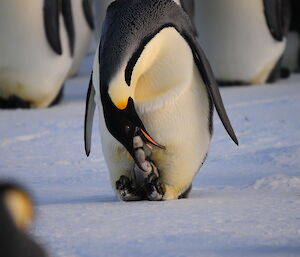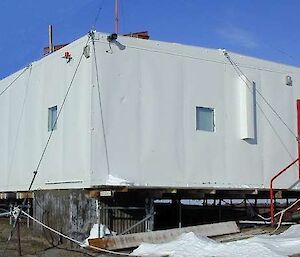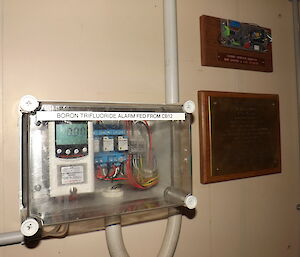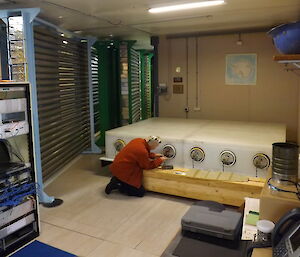Sea ice measurements
Since the beginning of April we have seen the sea turn to ice. As part of a scientific program the thickness of the ice is measured each week when the ice is thick enough to travel on safely. Four spots are drilled each year at Mawson and these include West Bay, East Bay, Kista Straight and Horseshoe Harbour. The exact positions are found by using a GPS and then a cane pole was placed in the hole as a marker.
This week I got to go out with our Field Training Officer (FTO) to take the measurements. There are three measurements we record which are the thickness of the ice, the thickness of the snow on top of the ice and the distance from the top of the ice to the water which comes up the drilled hole. When first drilled the ice was approximately 400mm thick and when we did it last the average thickness was 1300mm. West Bay was the thickest at 1390mm and Kista Straight was 1210mm. Some results from the last couple of months are in the table below.
|
DATE |
EAST BAY |
WEST BAY |
HORSESHOE HARBOUR |
KISTA STRAIGHT |
|
|
04/06/13 |
|
||||
|
ICE |
900 |
900 |
1000 |
800 |
|
|
SNOW |
80 |
10 |
100 |
100 |
|
|
WATER |
40 |
80 |
60 |
30 |
|
|
14/06/13 |
|
||||
|
ICE |
1000 |
1000 |
1020 |
1000 |
|
|
SNOW |
100 |
90 |
100 |
100 |
|
|
WATER |
50 |
80 |
45 |
50 |
|
|
24/06/13 |
|
||||
|
ICE |
1100 |
1100 |
1150 |
1000 |
|
|
SNOW |
80 |
0 |
110 |
60 |
|
|
WATER |
80 |
100 |
60 |
60 |
|
|
08/07/13 |
|
||||
|
ICE |
1080 |
1150 |
1220 |
1000 |
|
|
SNOW |
40 |
25 |
80 |
70 |
|
|
WATER |
80 |
110 |
70 |
60 |
|
|
17/07/13 |
|
||||
|
ICE |
1100 |
1200 |
1200 |
1020 |
|
|
SNOW |
50 |
20 |
80 |
50 |
|
|
WATER |
100 |
110 |
100 |
70 |
|
|
27/07/13 |
|
||||
|
ICE |
1200 |
1250 |
1280 |
1100 |
|
|
SNOW |
40 |
10 |
80 |
80 |
|
|
WATER |
110 |
130 |
80 |
80 |
|
|
01/08/13 |
|
||||
|
ICE |
1250 |
1320 |
1300 |
1180 |
|
|
SNOW |
60 |
10 |
70 |
70 |
|
|
WATER |
90 |
110 |
90 |
70 |
|
|
12/08/13 |
|
||||
|
ICE |
1300 |
1390 |
1380 |
1210 |
|
|
SNOW |
30 |
10 |
60 |
60 |
|
|
WATER |
130 |
130 |
90 |
80 |
This time of year when the ice is approaching its thickest going on previous records. Kista Straight is normally below the other as there is a strong current running through the water. Also if there is a large amount of snow on the ice it acts like an insulator and stops the ice from growing thicker. I find it very interesting how nature works and also don’t mind the advantage to get off station for an hour or so.

